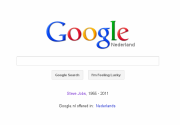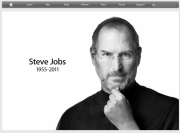Tag: Life
О неприятии типологий
https://snob.ru/selected/entry/120728
Козинский определяет нас лишь по пяти показателям: открытость новому, интроверсия и экстраверсия, ответственность, доброжелательность, нейротизм. У Никса и Cambridge Analytica всего пять базовых профилей личности.
Собственно, такой нехитрой математики, как выясняется, вполне достаточно, чтобы каждого из нас «посчитать». И мы можем сколько угодно рассуждать о собственной индивидуальности, исключительности, невообразимости и т. д. Но это бред сумасшедшего, страдающего манией личностного величия.
Желающие могут обманываться и дальше. Но их тоже посчитают: на непереводимом языке искусственного интеллекта будет сделана соответствующая пометка — «наивен, недальновиден, без ума от себя».
😀
Frustration of the day: If something can be done…
…it does not mean, that it should be done.
(…speaking of some network configurations…)
Processes and religion
What do processes and religion have in common? I’ve just stumbled upon this signature about processes:
“Process (like religion) shall set you free from the need for rational thought.”
New school subjects?
The basics of networking and socionics should be taught in schools nowadays. It’s unbelievable to see people struggling to set up a static IP-address, and people following advices how to (“make friends”|”become more authoritative in a work-group”|”avoid conflicts”|”build a happy family”|etc…) that might work only for a couple of psychological types and will completely destroy any relationships with some others.
Из семейной жизни…
– И что? Я зря мок, что ли?
– Теперь иди, зря сохни.
– Иногда лучше промолчать
– Вот и промалкивай.
Universality vs Simplicity or PSAudio and The Bridge woes
In my mind, universality and simplicity are mutually exclusive. I’m yet to find a system which is universal and simple to configure and use. Reliability and stability are assumed by default.
The simplicity of Apple devices is addictive. You add a new box, and it gets automatically recognized. Everything just works like prescribed and defined by Apple. Then it’s a question of if this Procrustean bed fits you or not and if you are flexible enough to assume the offered model.
The idea of service/device discovery appeared in the late 90s. For example, Sun’s Jini (1998) and UPnP (1999). It’s nice to have a standard to allow devices from different vendors to work together, right? Sure, but here comes the reality. The Cisco interpretation of the Spanning Tree Protocol is different from the Foundry (now Brocade) one. If you place Cisco and Foundry switches/load balancers in one LAN, you may end up with a funny STP loop.
So what do you expect from UPnP? Consumer boxes from dozens of manufacturers, software from the whole open and proprietary world – something must definitely go wrong here. It’s a bit more complex than an Apple printer and an Apple laptop.
The Bridge from PS Audio is designed as a UPnP media renderer (it’s a uClinux running rygel). It’s not more complex than similar products, it’s just not properly thought over. The original idea was to make it as simple as possible. Most likely having Apple in mind. However, it turned out that playing music became the proverbial pain in the ass. Despite the fact that PerfectWave DAC sounds better than the Transporter, I suddenly discovered that I almost stopped listening to music. And I consider myself as computer savvy and a diehard. My family keeps asking to connect the old CD-player back to the rig.
In the world of high-end audio, multiple functions and universality are not required. All we need is to bring x amount of bytes from one device to another. Some configuration is needed in any case, so I would sacrifice the incompatible and unreliable simplicity of UPnP and familiar but unstable and lossy nature of Internet streaming and use a platform independent solution (server and controller side) which is supposed to work with the Bridge only (client side) and not with any possible device.
The most elegant solution is from SlimDevices (now Logitech). Run-it-everywhere PERL driven server with a see-from-anywhere web-interface, direct connection to the player (Transporter, SqueezeBox, etc) and a bunch of plug-ins (there is also a UPnP plugin).
Linn created their own packages to make Twonky server work correctly with Linn UPnP media players and to add on-the-fly transcoding. Twonky is included in some NAS software (Linux), so the server issue is more or less solved.
At first, PS Audio relied on what was available on the market and wrote an UnNP controller application for Apple iDevices (how Apple centric!). Next step was the eLyric Music Manager – a UPnP/Database server which is still way too far from maturity. No UNIX support, no built-in UPnP controller (it’s possible feature for not the nearest future) and still extremely buggy.
The Bridge solution is about two year old, and we still have no reliable, platform independent and good sounding software.
And yes, I’m still using PWD/Bridge and sending eLyrics and Bridge bug reports. (Speaking of customer loyalty 😀 )
Google for Steve
How to find live web-cams
Google for the following strings to find, watch and control live video- web- CC- cams. And … learn how to secure your network 😉
Moscow heat and cats
+39 again…

